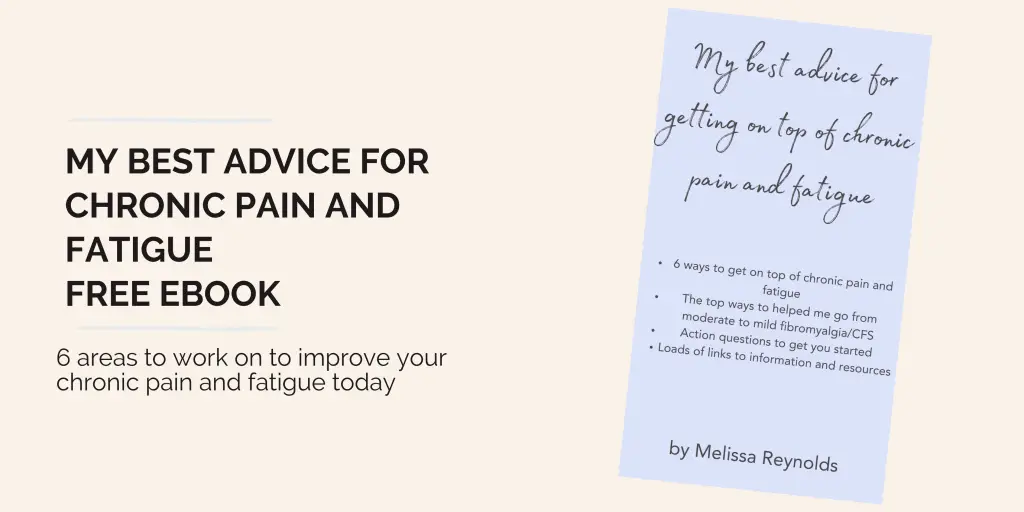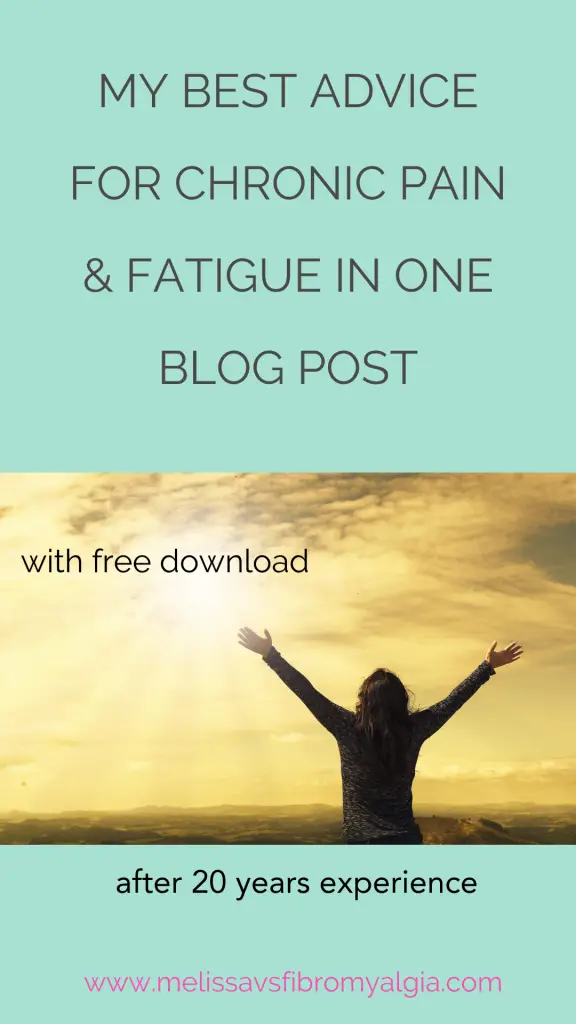I’ve learnt a lot in 20 years experiencing symptoms, 10 years actively trying things for myself and several years digging into research. I’ve written more than 300 blog posts, recorded more than 200 YouTube videos, published four books, run two support groups and created hundreds of resources to support you in your journey with chronic pain.
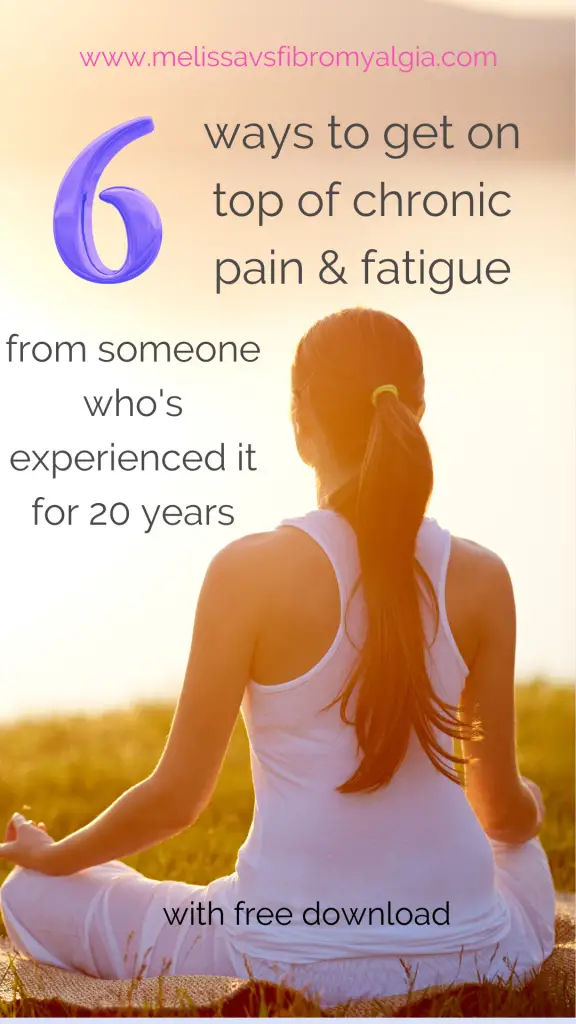
Affiliate notice: Please note that some of my links may be affiliate links. If you make a purchase using one of these links I may make a small commission at no extra cost to you.
I have a lot to say about all of these things, for the full goss, grab my book Fibromyalgia Won’t Win. In the meantime, I will try to keep this blog post concise with links for those who love more information and research.
Here’s the summary, my best advice for chronic pain and fatigue.
1. Start teaching your body to turn on the parasympathetic nervous system
My favourite tool for this is Yoga Nidra guided meditation. Turning on the parasympathetic nervous system allows your body to rest and digest. In conditions like fibromyalgia and other central sensitization syndromes, the sympathetic nervous system is most dominant. It is meant to turn on in response to threats and turn off again. But many of us are living in a constant state of fight or flight.
This is in response to external stressors, like traffic jams, overbearing bosses, kids with behavioral issues, relationship troubles, world events and much more. It’s also in response to internal stressors. Those perpetuating factors we will talk about later in this list.
You can’t meditate away serious health issues, but you can give your body the gift of rest right now.
For those of you who like more information and research – check out this blog post.
For those who would rather experience it – grab this free Yoga Nidra meditation
Homework: Choose something that switches on your parasympathetic nervous system and start doing it right away, today. Prioritise it. Meditate, breathe, restorative yoga, whatever calms your entire system.
2. Symptom management plan – especially pain
In the meantime, we aren’t going to calm the nervous system if we are stuck in high levels of pain. So make a symptom management plan. For fatigue, this means getting a good pacing plan going. For sleep, this means creating a comprehensive plan to improve sleep as much as possible right now and working with your doctor for medications that may help. For pain, this means an If This, Then That pain management plan.
Make your If This, Then That plan
How I’m sleeping after 20 years with chronic insomnia
3. Lifestyle
This includes stress management, fresh air, movement, joy, food and hydration. As I said above, you’re not going to meditate away serious health issues. But a basic healthy lifestyle will improve your overall health and make other treatments work better. Make an easy to stick to plan for simple health improvements.
My top recommendations after my research and personal experience are:
- Make sure you are breathing correctly (a surprising number of us are not!)
- Drink enough water and watch your electrolytes
- Get natural light in your face early in the day
- Tackle any stressors in your life and develop a good nervous system plan to build resilience to the rest (as in number one)
- Cut the ultra-processed food
- Move – however that looks for you right now, isometric stretches in bed, gentle yoga, walk around the block, swimming, marching in your lounge, weight training etc.
I teach gentle movement, breathwork, nervous system calming exercises and much more in The Foundations of Yoga for Chronic Pain and Fatigue, and I’m offering a massive 50% off right now.
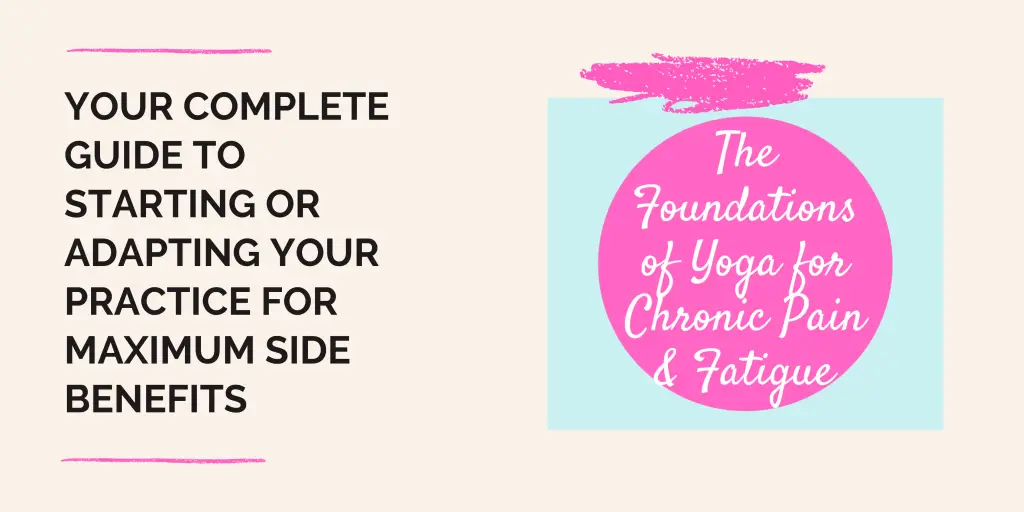
4. Neuroinflammation
Research and personal experience supports the theory of neuroinflammation in conditions like fibromyalgia and chronic fatigue syndrome. Low dose Naltrexone certainly changed the game for me. In March 2024, I will have been on it for seven years. I can’t see myself ever going off. Do some research in this area because it is the only medicine available with very limited side effects, no serious negative side effects and a high percentage chance of it helping.
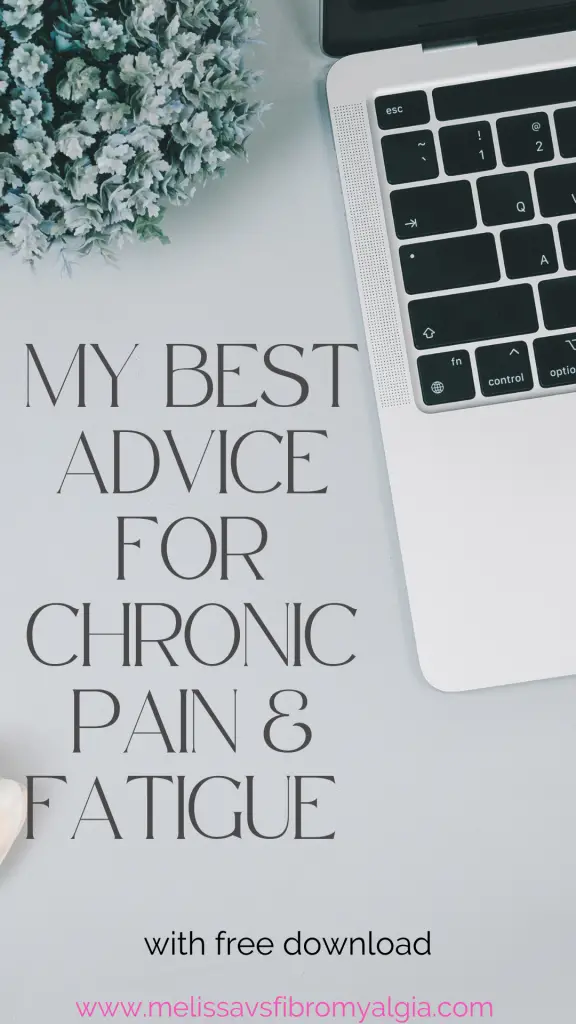
5. Perpetuating factors
This is the one that has tripped me up for years and kept me stuck. You need to be sure of what your diagnosis/es are. If you suspect structural causes for your pain (i.e.. the pain originates in the muscles or joints) then that must be treated.
In 2023 I finally found out that I had endometriosis. After a hysterectomy and endometriosis excision surgery, and a long recovery, I moved several steps ahead in my health journey.
In 2022, I found out I had interstitial cystitis. I ignored it because the endometriosis had taken over everything. So I’m only just learning how to manage this.
It is currently suspected that I have hypermobility. I’m on a waitlist to see a rheumatologist and hope they know about hypermobility and potential Eller’s Danlos Syndrome. My sacroiliac joint keeps going out of place, you can’t calm your nervous system if a joint is physically out of place!
For several years it was believed that most of my pain came from trigger points. But upon starting (gentle) chiropractic treatment in October 2023, supporting my spine made more of a difference to the trigger points than approaching them directly ever did.
The moral of the story is you can have the perfect holistic management plan, but if your nervous system is being pelted by danger signs from your muscles and joints, you aren’t going to get very far in treating it.
6. Your unique biochemistry
This is where your personal intolerances, nutritional deficiencies, thyroid and adrenal function and metabolic health come into play. If you are eating foods that you are intolerant to, not correcting your specific nutritional deficiencies or addressing any issues in your system (including thyroid and adrenal function), you aren’t going to get very far.
For example, if I consume dairy products, even if I can get it past my stomach (like cream and ghee, low lactose products) my finger joints will become stiff and sore. Who knows what else is happening inside that I can’t see! Artificial sweeteners do the same thing.
Again, we have to stop pelting our nervous system and bodily systems.

My best advice for chronic pain and fatigue, summary
I know this is a lot. Getting on top of conditions like fibromyalgia and chronic fatigue syndrome is complex. I wish there was a specialist you could be referred to who would manage it all with you, but until that day comes, I hope my work helps guide you.
I honestly believe if you work through what I share here, then you will make a difference to your quality of life. If you never read another post of mine again, or if I never wrote another blog post – I’d be happy this one exists.
To download this as an eBook to refer back to and get the bonus section – things I do every day that have made the most difference (I have gone from moderate to mild fibromyalgia) and action questions to get you started on your own journey – grab it here.
